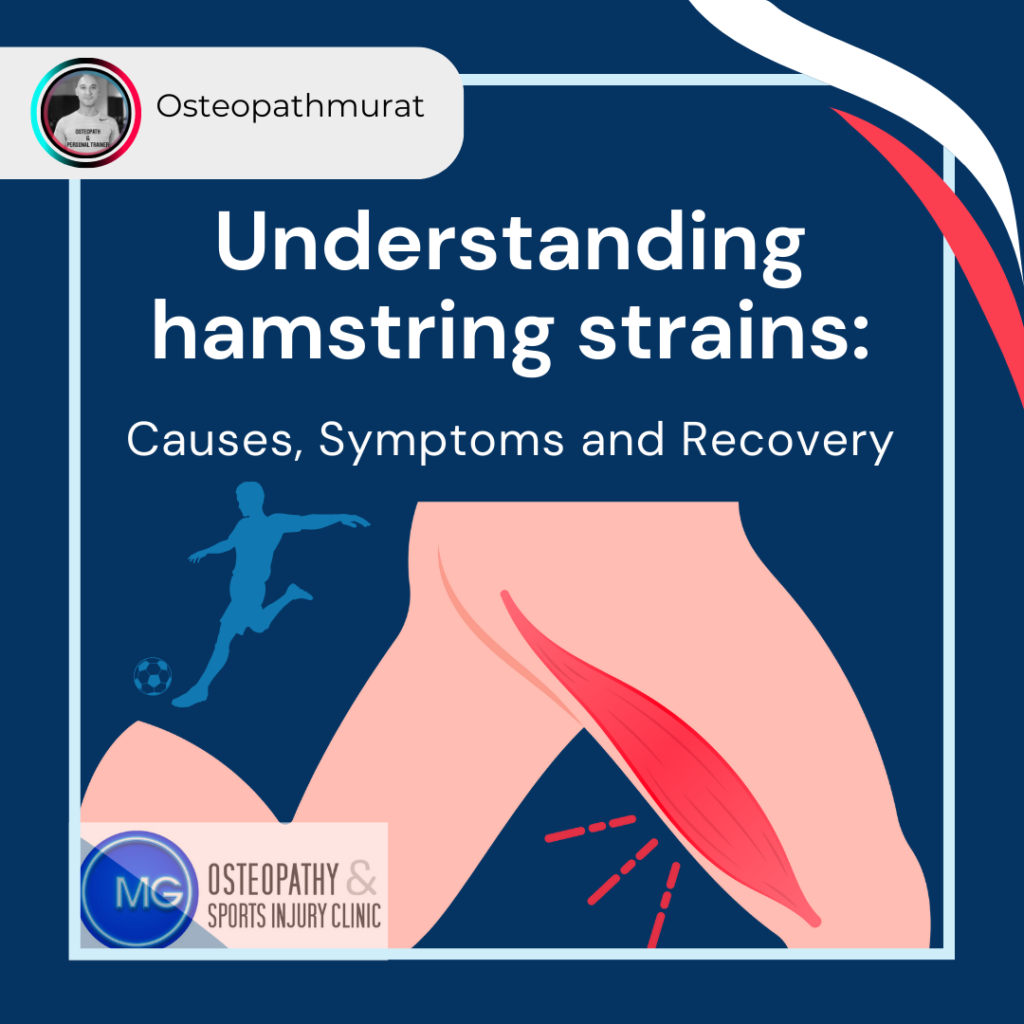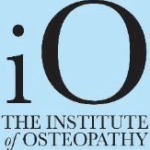Introduction to hamstring strains in Athletes
Hamstring strains are one of the most common injuries among athletes, particularly those involved in sports that require sudden bursts of speed, rapid acceleration, or quick directional changes, such as footballers.
The hamstring muscles are a group of three muscles located at the back of the thigh: the biceps femoris, semitendinosus, and semimembranosus. A hamstring strain occurs when one or more of these muscles are overstretched or torn, which can range from a mild pull to a complete tear.
Causes of Hamstring Strains
Several factors can contribute to hamstring strains:
- Muscle tightness/lack of flexibility: this can make the hamstrings more prone to strains, so it’s important to look after the hamstrings with regular stretching, conditioning and treatment such as osteopathy and sports massage.
- Muscle Imbalance: If the quadriceps (front of thigh muscles) are significantly stronger than the hamstrings, it can increase the risk of injury. This is often the case in athletes like footballers.
- Fatigue: Tired muscles are less capable of absorbing energy, making them more susceptible to injury. Many athletes participate in a fast paced game, so doing everything to allow the body to cope with this is crucial, such as good nutrition, hydration and sleep quality, and participating in a good strength training plan in the run up to games.
- Insufficient Warm-up: Not properly warming up before activity can leave muscles unprepared for the demands of exercise.
- Previous Injuries: A history of hamstring strains increases the likelihood of re-injury.
Symptoms of Hamstring Strains
Hamstring strains can vary in severity, which influences the symptoms experienced. Common symptoms include:
- Sudden, sharp pain in the back of the thigh
- Swelling and bruising
- Muscle weakness
- Difficulty walking or straightening the leg
- Tenderness in the affected area
Diagnosing Hamstring Strains
If you suspect a hamstring strain, it’s essential to seek a professional evaluation. The Osteopaths at MG Osteopathy and Sports injury clinic East London will perform a thorough physical examination to determine the grade of injury that has occurred, and give you your bespoke treatment plan from here.
Treatment and Recovery
The treatment for hamstring strains generally follows the R.I.C.E protocol:
- Rest: Avoid activities that cause pain or discomfort.
- Ice: Apply ice packs to the affected area for 15-20 minutes every 2-3 hours during the initial days post-injury.
- Compression: Use a compression bandage to reduce swelling.
- Elevation: Keep the leg elevated to minimize swelling.
In addition to R.I.C.E, the following steps are often recommended:
- Physical Therapy: Engaging in a structured rehabilitation program can help restore strength and flexibility.
- Hands-on treatment: Osteopathy is helpful for recovery and can release tightness, reduce pain, and improve range of motion of not just the hamstring, but the joints nearby such as ankle, knee, and hip.
- Gradual Return to Activity: Once pain and swelling subside, gradually reintroduce activities, ensuring to incorporate proper warm-ups and stretching.
Read our other blog on Beating Football Injuries





